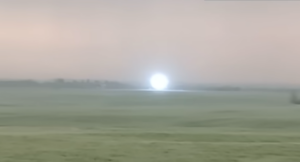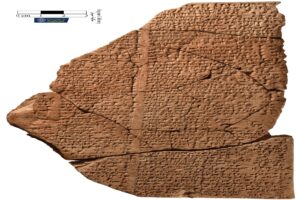A recent discovery in the Czech Republic may shed light on one of Europe’s enduring archaeological puzzles.
Roundels are circular 7,000-year-old structural remains found throughout Central Europe. Built more than 2,000 years before Stonehenge or the Egyptian pyramids, these strange ruins have remained shrouded in mystery.
Earlier this month, archaeologists discovered a new roundel near Prague that’s larger than many others and better preserved. This Stone Age structure measures 55 metres in diameter.
“It would be great to discover something that would indicate the actual function of the building,” Miroslav Kraus, director of the roundel excavation in the district of Vinoř, told Radio Prague International. “It would also be great to find something that would suggest its real age. So far, radiocarbon dating of samples…has put their age somewhere between 4,900 years to 4,600 BC. That is a pretty wide time span.”
One of the only things that scientists know for certain is that the roundels belonged to the Stroked Pottery culture, an ancient civilization that existed from 4,900 BC to 4,400 BC.
As the roundels represent the oldest-known form of architecture in Europe, understanding their purpose could fill an important gap in the anthropological record.

An aerial view of the roundel in the district of Vinoř. Photo: Archaeological Institute of the Academy of Sciences
Hundreds of roundels found in Europe
Roundels first re-emerged in the late 1800s, but it wasn’t until the 1980s that their proliferation throughout Central Europe became clear.
Thanks to aerial photography and drones, researchers have now found about 200 roundels throughout Central Europe, with nearly a quarter of those in the Czech Republic.
This latest roundel, found in the district of Vinoř, first revealed itself to construction workers laying gas and water pipelines in the 1980s. It’s only now, with a professional excavation by Czech archaeologists, that the entire structure has become visible.
Led by Kraus, the team has already found animal bones, pottery fragments, and stone tools, Live Science reported.
So what do roundels look like exactly? From above, they contain several circular ditches with gaps as entrances. These ditches could have hosted a palisade of wooden poles, as in the rendering above.
The enigma deepens with the relatively short lifespan of these structures, which spanned just two or three centuries in the late Neolithic period.
“There was simply some kind of societal change, where the roundels could no longer fulfill the function they had before and they just stopped being used. And we know that it was sometime around 4600 BC,” said Jaroslav Ridky, a Czech archaeologist.
What were roundels for?
No one knows exactly what purpose roundels served. One theory suggests that they were military outposts. Another is that farming communities gathered there or even lived within them. No one knows for sure.
Ridky said they probably served several uses, “the most important being socio-ritual.” It seems clear that they were gathering places for large numbers of people, he said.
Czech archaeologists will continue researching the Vinoř roundel until the end of September.






